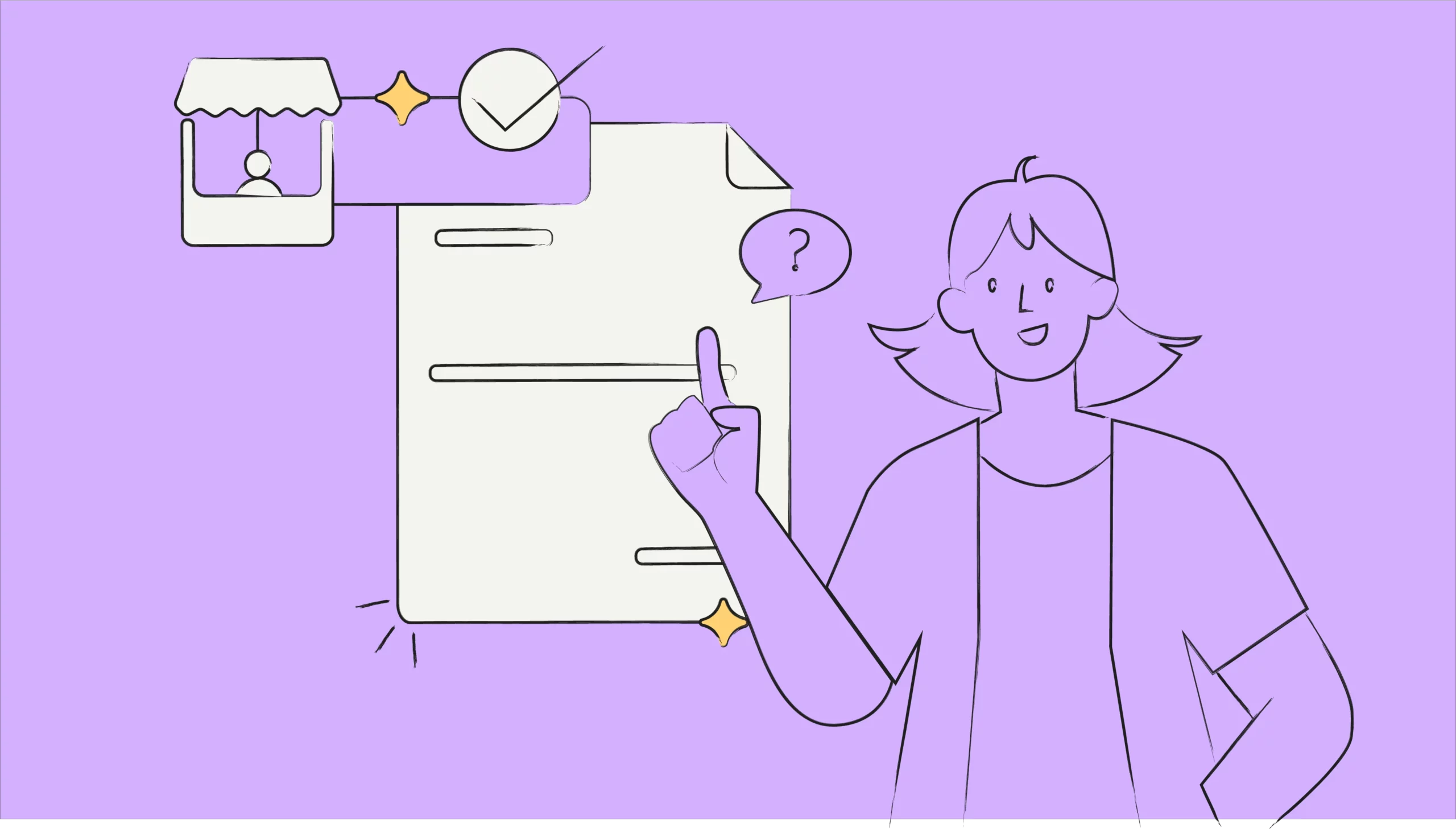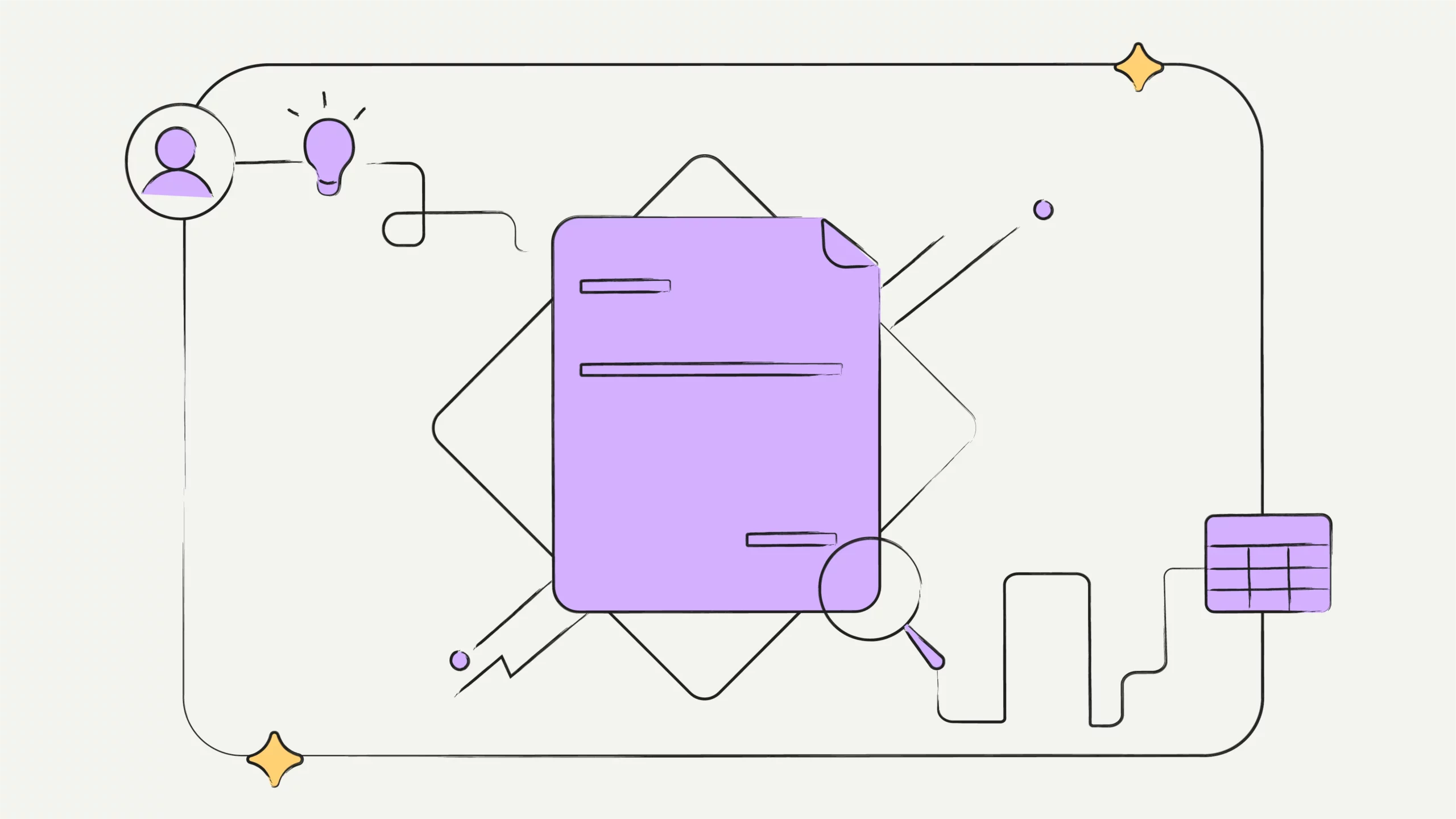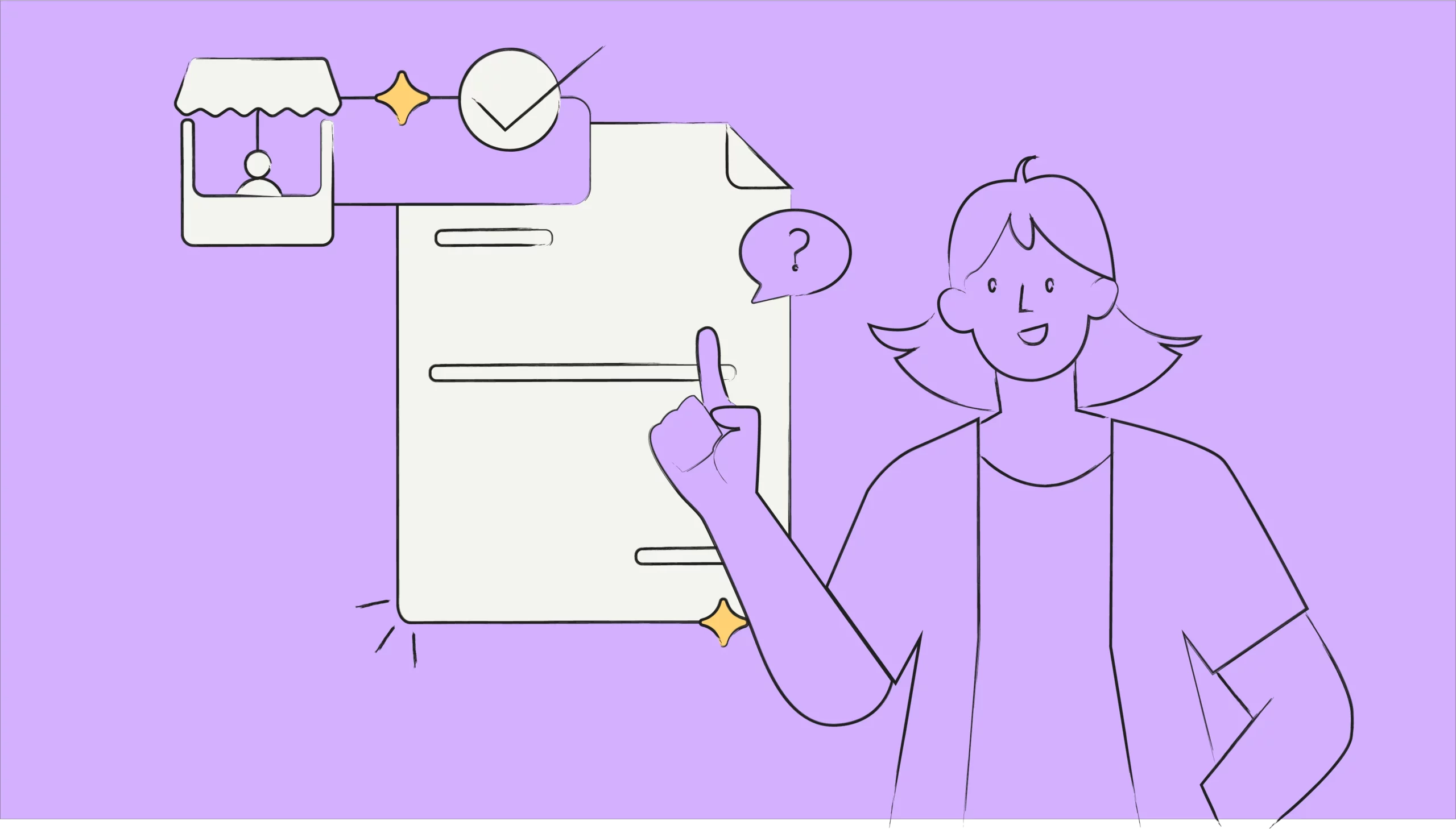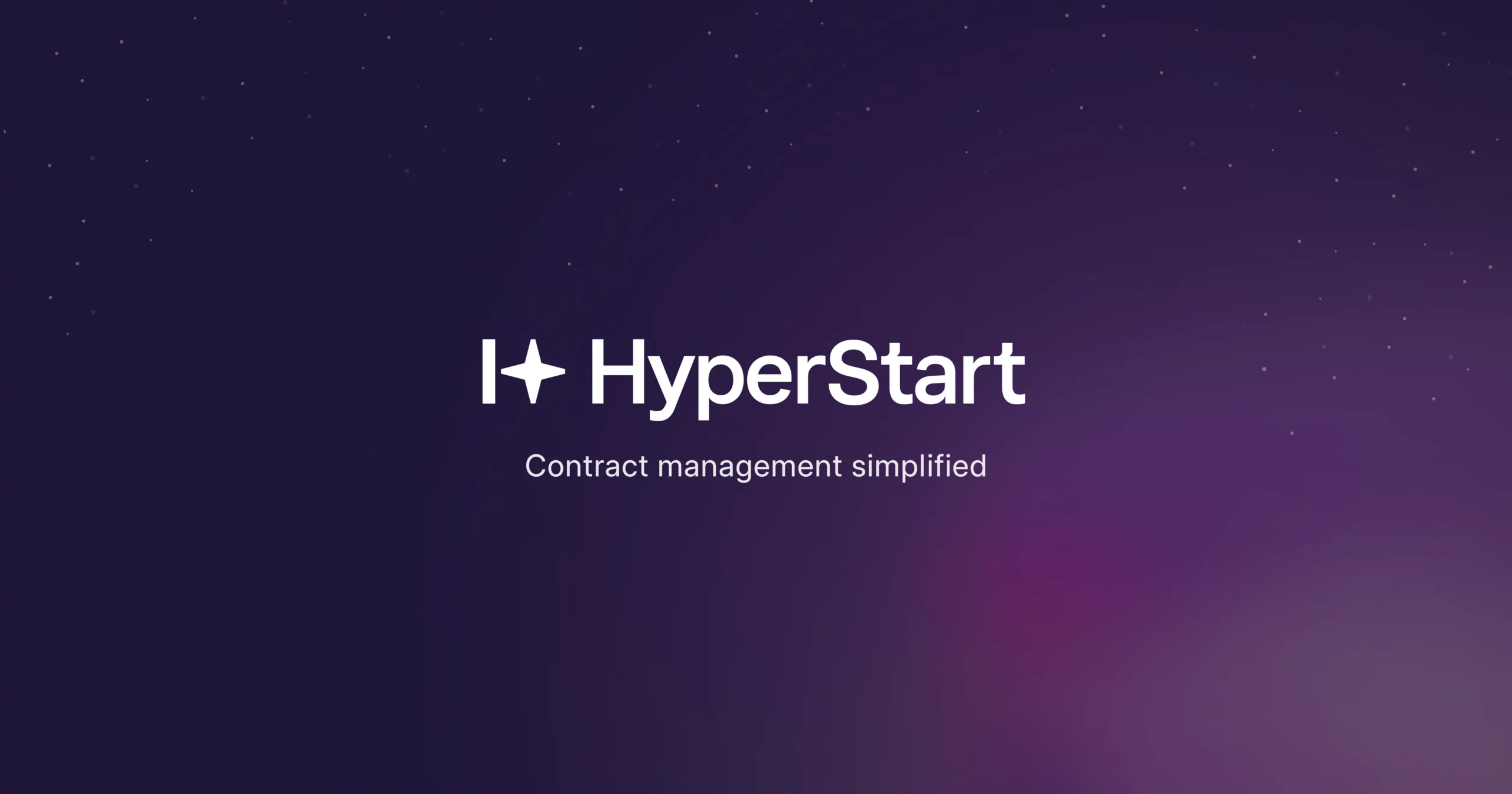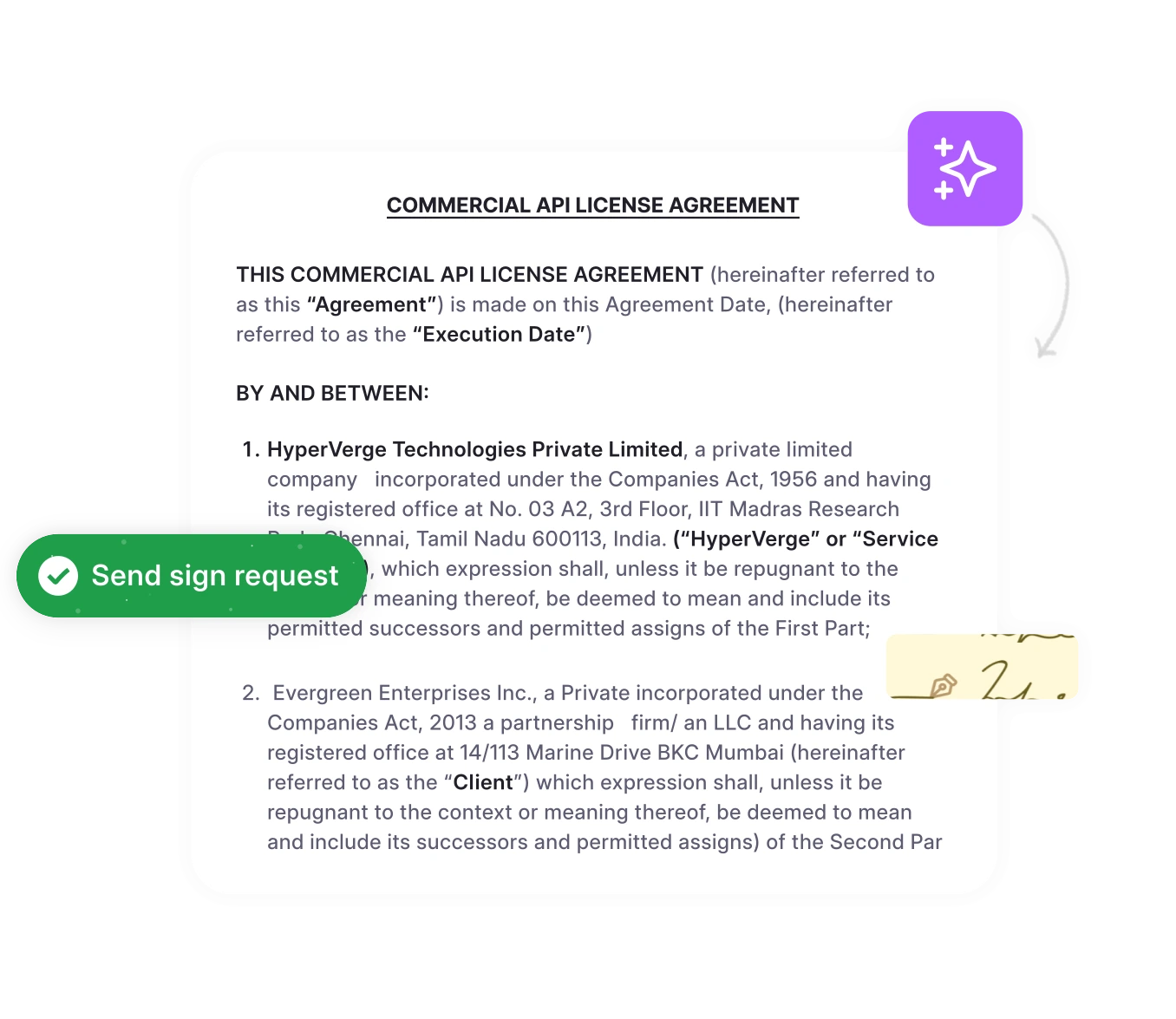The supplier agreement is basically the rulebook for your relationship with a vendor, and it’s one of the most important documents you’ll sign.
Drafting, negotiating, and managing these contracts can be a time-sink. What if you could shift from being buried in paperwork to strategically building stronger supplier partnerships? That’s the power of getting your supplier contracts right—and then automating the process.
Let’s dive in.
What is a supplier agreement?
The supplier agreement is a formal contract that lays out the “who, what, when, where, and how much” of your partnership with a supplier. It’s the foundational document that defines everything from the scope of supply and payment terms to liability clauses and confidentiality obligations.
Basically, a well-structured supplier agreement transforms a simple handshake into a legally binding partnership that protects both parties.
Shift focus to outcomes, not just indemnities
For strategic supplier agreements, high-performing legal teams are shifting the negotiation focus away from solely mitigating transactional liability toward building a framework for long-term.
McKinsey advises that this approach emphasizes mutually agreed-upon key performance indicators (KPIs) and continuous improvement clauses, putting the responsibility for operational efficiencies and value creation onto the supplier.
Why this matters: This proactive approach is essential because poor supplier performance can result in significant (10–20%) indirect downstream costs, regardless of typical liability caps.
Ready to Stop Worrying About Contracts?
Ditch the messy spreadsheets and email chains. See how our platform makes managing supplier agreements simple.
Book a DemoWhy do you need one (and what happens without it)
A solid supplier agreement is your first line of defense for reducing risk, ensuring you get what you paid for, protecting your business, and maintaining a healthy business relationship. Without one, you’re operating on assumptions that could lead to potential disputes, late delivery, and financial loss.
Consider this common challenge: Supplier and contract management teams often spend up to 80% of their time on low-value administrative activities like data management, reporting, and basic compliance. This leaves little room for the strategy development where true value can be unlocked.
This is where Supplier Relationship Management (SRM) becomes critical.
The role of supplier relationship management (SRM)
A significant 61% of Chief Procurement Officers (CPOs) highlighted “Increasing level of supplier collaboration” as their top priority for 2023, underscoring a strategic shift in how companies view their vendors.
- SRM shifts the supplier relationship beyond a narrow, transactional focus towards deeper, outcome-driven partnerships.
- Formalizing an SRM approach establishes a structured process for nurturing relationships aligned with the overall business strategy.
- Objectives of SRM include strengthening mutually beneficial collaborations, enhancing innovation, and optimizing cost efficiency.
Read also, A Guide to Supplier Contract Management
Build Better Supplier Agreements, Faster.
From drafting to e-signature, streamline your entire contract workflow. Let us show you how.
Book a DemoThe must-haves: What to include in your supplier agreement
A good vendor agreement is in the details. Let’s walk through the key clauses you can’t skip.
The basics: Scope, duration, and termination
- Scope of Supply: What exactly are they providing? Be specific about goods, services, technical specifications, and quality standards.
- Duration: How long do these parties agree this partnership will last?
- Termination: How can you(or they) end the relationship fairly? Detail termination clauses, including notice periods and what constitutes a material breach.
The commercials: Payment terms, pricing, and discounts
- Payment Terms: How and when do you pay? Be clear on due dates, methods, and late payment penalties.
- Pricing: Are prices fixed or variable? Is there unit pricing? Clearly outline the total cost.
- Discounts: Are there any incentives for early payment?
The logistics: Delivery, quality, and acceptance
- Delivery& Lead Times: When and how do you deliver? Define the delivery schedule and delivery obligations.
- Quality Assurance& Warranties: What happens if the product or service isn’t up to snuff? Specify quality control processes and the warranties provided.
- Acceptance: How do you formally”accept” a delivery? This prevents disputes later.
The “what ifs”: Liability, IP, and confidentiality
- Liability& Indemnity: Who is responsible if something goes wrong? This is where limitation of liability and indemnification clauses are critical.
- Intellectual Property (IP): Who owns any new ideas, designs, or trade secrets created during the partnership?
- Confidentiality: How are you keeping your business secrets and customer information safe? Define confidential information and the obligations for its protection.
The disconnect in negotiation focus
There is a consistent disconnect between the terms negotiators focus on and the terms that cause problems during performance.
| Category | Top Terms (MNT) | Top Disputed Terms (MDT) | Insight |
| Risk & Liability | Limitation of Liability, Indemnification | Price/Charge/Changes, Scope/Specification | Negotiators often focus on mitigating consequences of failure rather than addressing the mechanisms for success. |
| Commercial Terms | Price/Charges, Payment/Payment Options | Delivery, Invoices/Late Payment, Service Levels | Disputes over price changes and scope suggest that negotiators fail to build adequate flexibility or ensure mutual understanding upfront. |
The map is not the territory. According to World CC, the data reveals that while businesses continue to emphasize risk-related clauses, the real source of performance issues lies in practical terms like scope, price, delivery, and service levels. Procurement teams may benefit from reconciling these differences to achieve better outcomes by:
- Planning collaboratively
- Balancing business terms and risk appetites of parties
- And creating benchmarks for flexibility and alignment throughout the contract lifecycle.
Common types of supplier agreements
You’ll run into a few different kinds. Let’s quickly compare the most common ones so you know what you’re looking at.
1. Supplier agreement vs. Service agreement
This is a key difference: A supplier agreement is typically for when you’re buying tangible goods (e.g., raw materials, components). A service agreement is for someone’s time and expertise (e.g., consulting, software development) and often includes specific service level agreements (SLAs) and response times.
2. Framework agreement vs. One-off contract
Are you setting up a long-term relationship or just a single purchase? A framework agreement sets the general terms for an ongoing relationship, with specific “call-off” orders (like purchase orders) placed as needed. A one-off contract is for a single, discrete transaction.
Common pitfalls: Mistakes to avoid when drafting your agreement
We’ve seen what to put in, now let’s talk about what to look out for.
1. Addressing the SME power imbalance
When negotiating with Small and Medium-sized Enterprises (SMEs) as suppliers, legal and procurement departments of larger companies must acknowledge the inherent power imbalance. The strategic insight is to move beyond template rigidity and unilateral clauses. Tailor high-risk terms (like liability caps and insurance requirements) based on the actual size and capability of the smaller partner. This fosters a more cooperative and successful long-term relationship.
2. Vague language
Why “reasonable efforts” is a phrase to watch out for. This kind of vague language opens the door for disputes. Always strive for specific, measurable terms.
3. Missing SLAs (service level agreements)
If you’re buying a service, you need to define performance metrics and service levels. Without clear SLAs, you have no objective way to hold a supplier accountable for performance.
4. Ignoring dispute resolution
What happens when you disagree? Plan for this before it happens. Your supplier or procurement contract should include a dispute resolution clause that outlines steps for mediation or arbitration and dispute resolution.
Read also Framework Agreement: Complete Guide for Procurement Teams
Best practices for modern supplier agreement management
1. Implement contracting for performance (CfP)
CfP is a comprehensive approach essential for maximizing supplier value and mitigating risk.
- Define Metrics: CfP contracts define key performance indicators and acceptable quality levels within the scope of work.
- Incentives and Penalties: Establish clear rewards and penalties linked to performance metrics. For instance, contracts for major suppliers might include two to three high-priority KPIs.
- Focus on TCO: Ensure negotiations start with a comprehensive perspective on Total Cost of Ownership (TCO), not just the initial purchase price.
- Monitor and Enforce: Commitment to regular monitoring of supplier performance against defined targets is vital.
2. Prioritize people and process before technology
Before adopting a Contract Lifecycle Management (CLM) system, organizations must prioritize foundational work.
- Simplify the Process: Understand, improve, and simplify your CLM functions. Automating a bad process only makes the bad process faster.
- Define Roles: Clarify roles and responsibilities(“People”) and review “how” contracts flow across the company(“Process”).
- CLMS Adoption: When choosing a CLMS, prioritize features like full suite consolidated solutions and seamless integration with other tools(e.g., CRM, ERP).
3. Improve negotiation and contract writing
Optimize the pre-signature phase to reduce value leakage.
- Negotiate for Value: Adopt a relationship-focused methodology and negotiate for value, not position.
- Leverage Playbooks: Develop a playbook with pre-determined, approved responses for frequent counter-party positions.
- Data-Driven Negotiations: Use historical data to identify key negotiation touch points and pain points.
4. Enhance post-award management with technology
Post-award activities require rigorous management, ideally supported by modern CLM technology. According to industry analysis, AI is highly effective for post-signature phases, specifically for storing and managing contracts, including the extraction of key metadata and tracking obligations.
- Obligation Management: Move obligation management from static documents to live workflows using smart alerts.
- Visibility and Search: Implement a secure, searchable, centralized repository. A fundamental challenge for many teams is simply finding contracts.
- Risk Management: Embed risk management as an ongoing, integrated element of supplier management.
- Performance Monitoring: Automate performance and financial management with dashboards that centralize supplier performance into a single view.
Tired of Contract Bottlenecks?
Automate your supplier agreements and get back to growing your business.
Book a DemoAdopting technology in your supplier contract management
“Here’s the scoop from the latest data: Nearly half of companies admit they aren’t quite ready for a modern contract system and need to make foundational improvements before implementing a CLM system.
AI is a rockstar for managing contracts after they’re signed. It’s brilliant at pulling out key details, creating dashboards, and automatically tracking what we need to do.
A supplier agreement is most healthy, predictable, and profitable to your business relationship when it’s contoured for the long game. By getting these key terms right from the start and leveraging tools like Hyperstart AI for contract management, you’re building a resilient supply chain and giving yourself the gift of focus.
Frequently asked questions
20 Essential Types of Contracts Explained



